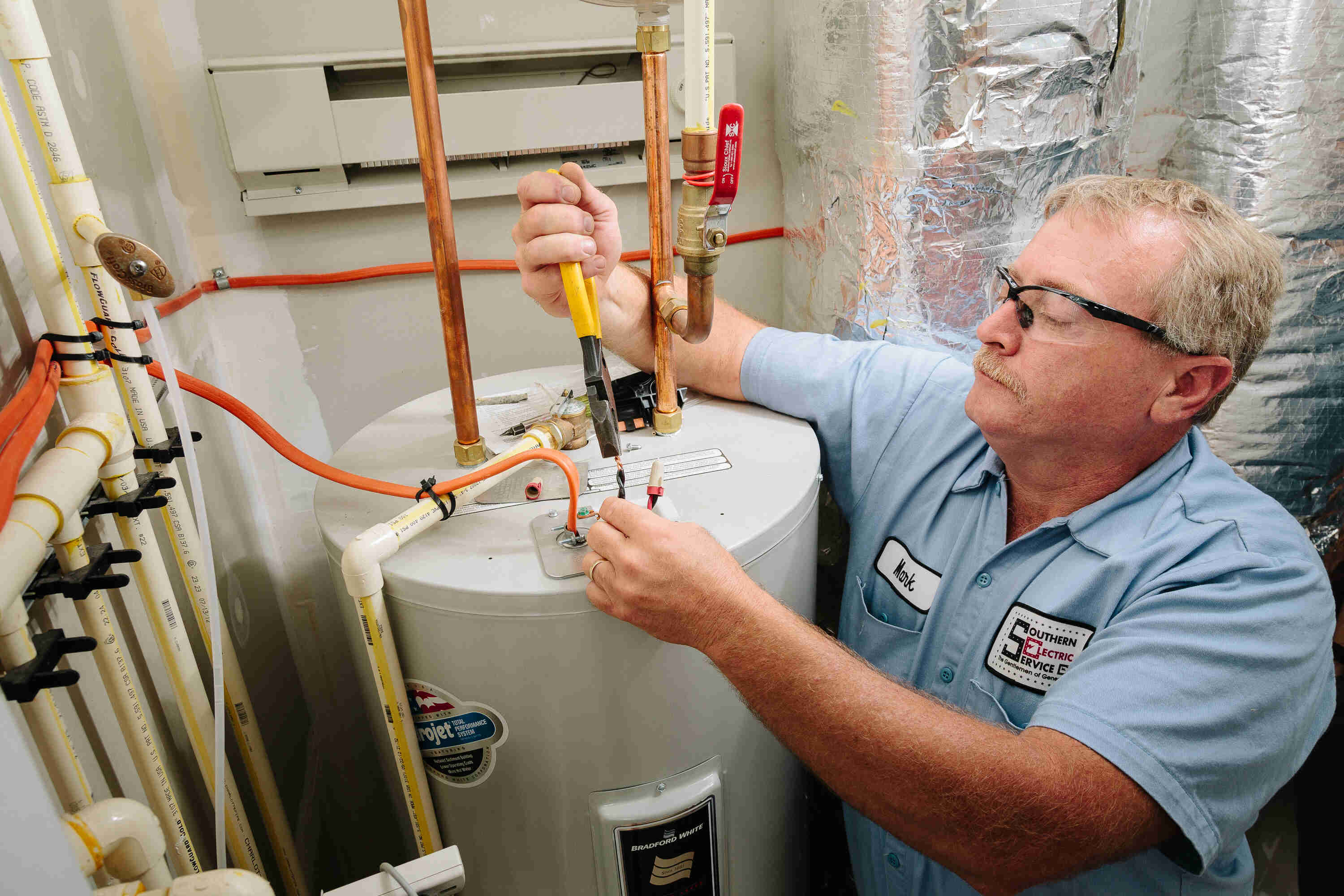Effective Methods to Care for Your Home's Hot Water System Effectively
Effective Methods to Care for Your Home's Hot Water System Effectively
Blog Article
Listed here below you might get more good quality additional info relating to How to Maintain a Hot Water Heater in a Few Simple Steps.
:max_bytes(150000):strip_icc()/tankless-hot-water-system-in-the-basement-of-a-green-technology-home-529577258-77afda16fd494c6899a78000888c3204.jpg)
Warm water is vital for daily comfort, whether it's for a revitalizing shower or cleaning dishes. To guarantee your warm water system runs successfully and lasts longer, regular upkeep is crucial. This short article provides sensible pointers and understandings on how to keep your home's hot water system to avoid disturbances and expensive repairs.
Introduction
Keeping your home's hot water system could appear challenging, yet with a couple of easy steps, you can guarantee it operates efficiently for years ahead. This guide covers every little thing from understanding your hot water system to do it yourself maintenance tips and understanding when to hire specialist help.
Importance of Preserving Your Warm Water System
Routine upkeep not only expands the life-span of your hot water system however also ensures it runs effectively. Disregarding maintenance can lead to reduced efficiency, higher power bills, and also early failure of the system.
Indicators Your Hot Water System Demands Maintenance
Understanding when your warm water system needs interest can prevent major concerns. Look out for signs such as irregular water temperature level, unusual sounds from the heater, or rustic water.
Recognizing Your Warm Water System
Before diving into upkeep jobs, it's valuable to recognize the basic components of your warm water system. Commonly, this includes the water heater itself, pipelines, anode poles, and temperature controls.
Monthly Maintenance Tasks
Normal monthly checks can help catch minor problems prior to they intensify.
Purging the Hot Water Heater
Purging your hot water heater gets rid of sediment buildup, improving effectiveness and extending its life.
Checking and Replacing Anode Rods
Anode rods stop deterioration inside the container. Inspecting and changing them when broken is crucial.
Inspecting and Adjusting Temperature Settings
Adjusting the temperature settings ensures optimal efficiency and safety and security.
Do It Yourself Tips for Upkeep
You can perform numerous upkeep jobs yourself to keep your hot water system in top condition.
Checking for Leakages
Consistently evaluate pipelines and links for leaks, as these can lead to water damage and higher costs.
Examining Stress Relief Valves
Evaluating the pressure safety valve guarantees it operates appropriately and avoids extreme pressure build-up.
Protecting Pipes
Insulating hot water pipelines lowers warmth loss and can conserve energy.
When to Call a Specialist
While do it yourself maintenance is useful, some issues call for specialist know-how.
Facility Problems Needing Professional Aid
Instances consist of major leakages, electric issues, or if your water heater is consistently underperforming.
Regular Expert Upkeep Perks
Professional maintenance can consist of complete evaluations, tune-ups, and ensuring conformity with safety criteria.
Final thought
Routine upkeep of your home's hot water system is essential for performance, long life, and cost financial savings. By complying with these suggestions and recognizing when to seek specialist assistance, you can ensure a trustworthy supply of hot water without unforeseen disruptions.
Water Heater Maintenance Tips
Test the TPR Valve
Shut off the power and the cold-water supply valve. Place a bucket under the pipe connected to the temperature-pressure-release (TPR) valve on the top or side of the tank. (This valve opens if the tank pressure gets too high.) Lift the valve’s tab to let some water out, then let go. If water keeps flowing, drain the tank partway, unscrew the old valve with a pipe wrench, and install a new one. Check the Anode Rod
Put a hose to the tank’s drain cock and let out a few gallons of water. Now fit a 1 1/16-inch socket onto the rod’s hex head on top of the heater (or under its top plate) and unscrew the rod. If it’s less than ½ inch thick or coated with calcium, buy a new one, wrap its threads with Teflon tape, put it back in the tank, and tighten securely. Use this segmented rod if headroom above the tank is limited. Drain the Tank and Wash Out Sediment
Drain the remaining water in the tank into the bucket, then stir up the sediment on the tank’s bottom by briefly opening the cold-water supply valve. Drain and repeat until clean water comes out of the hose. Close the drain cock, refill the tank, and turn its power back on. Adjust the Temperature
Find the temperature dial on the side of the tank and unscrew its cover. Adjust the dial to 120 degrees using a flathead screwdriver. For every 10 degrees the temperature is lowered, you can expect to save up to 5 percent in energy costs. Turn the water heater off or the thermostat down to its lowest setting if you plan to be away from home for more than three days. Insulate the Pipes
Buy some self-sticking 3/8-inch-thick foam pipe insulation that matches the pipes’ diameter. Slide the foam over the hot-and cold-water pipes as far as you can reach. Insulating the cold-water pipe prevents condensation in summer. Peel the tape and squeeze the insulation closed. If the pipe is 6 inches or less from the flue, cover it with 1-inch-thick unfaced fiberglass pipe wrap. https://www.thisoldhouse.com/plumbing/21016402/how-to-maintain-a-water-heater

As a serious person who reads about How to Maintain Your Water Heater & Prolong its Life, I was thinking sharing that excerpt was sensible. Sharing is good. You won't know, you will be helping someone out. Thanks for going through it.
Browse Our Site Report this page